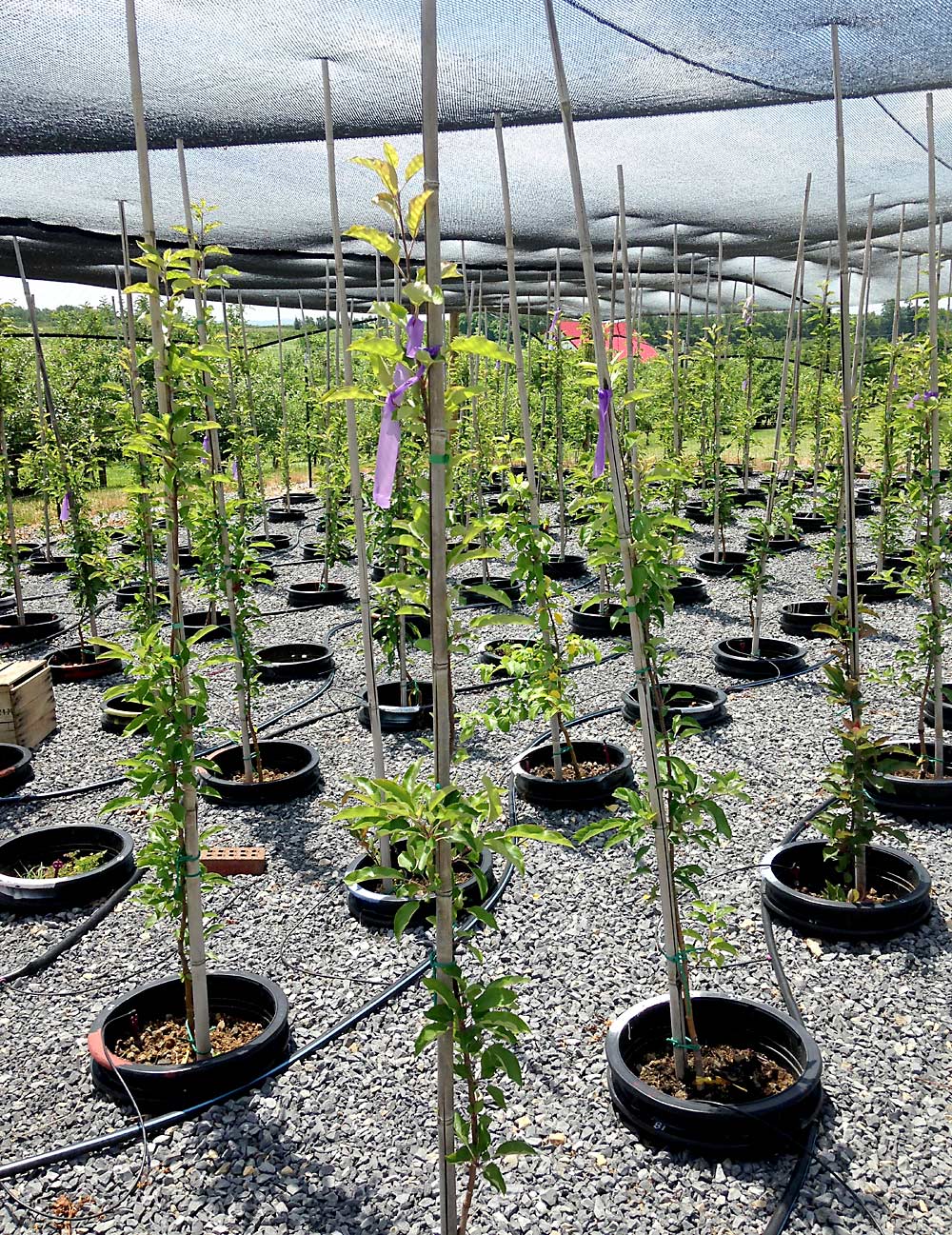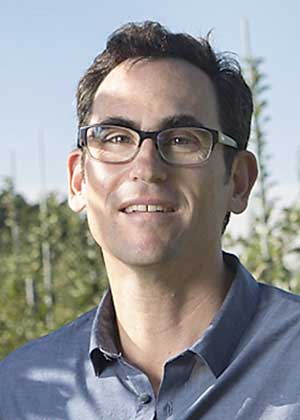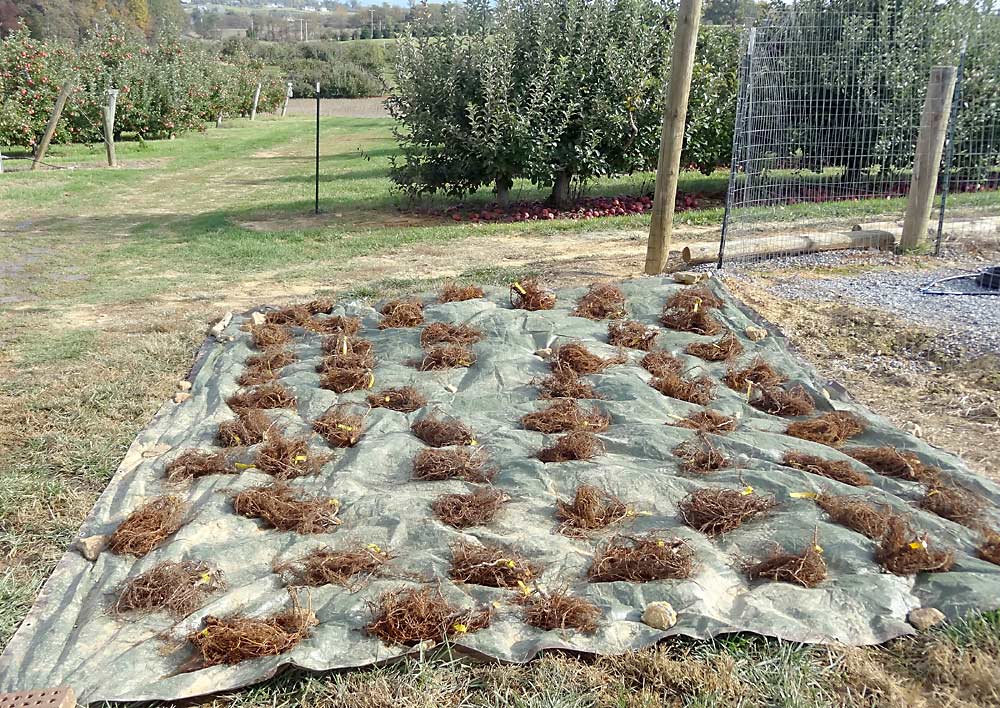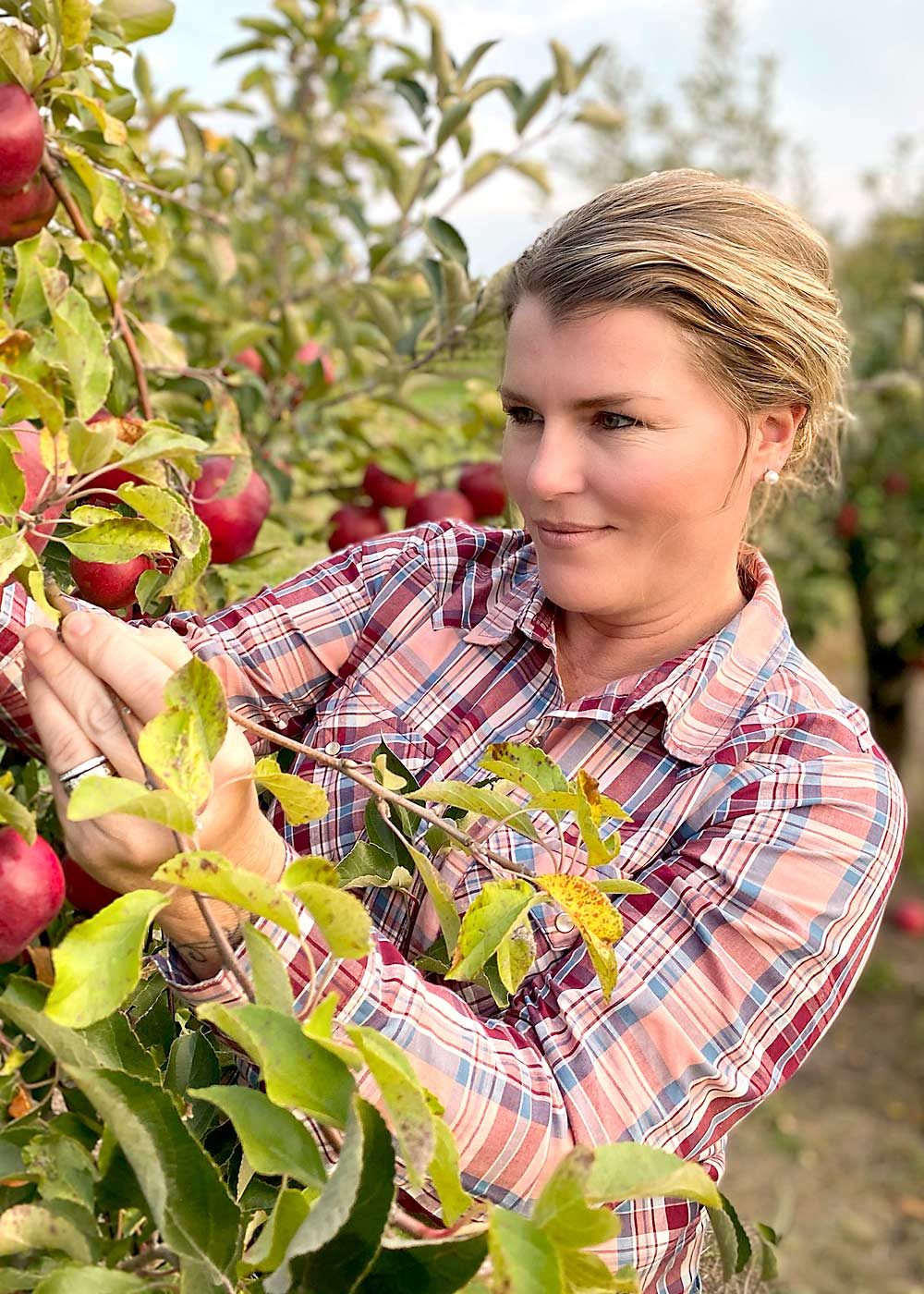
Healthy soil is vital to a productive farm, but there’s more to soil health than the periodic application of a mineral fertilizer. Recent research shows how compost amplifies vital soil microbes — far more than a typical mineral fertilizer — and intensifies nutrient uptake by apple trees.
Benefits of composting
Cornell University and Virginia Polytechnic Institute and State University (Virginia Tech) researchers set their sights on the dwarfing apple rootstocks to update their understanding of soil nutrition and the benefits of compost.

“The way that we had thought as an industry about soils and plant nutrition was on a replacement basis: so, remove so much through the crop each year and then add that much nutrition, usually in a mineral form, back into the system each year,” said Gregory Peck, associate professor and researcher in Cornell’s School of Integrative Plant Science. But times and apple production systems have changed.
Growers have changed, too, and are eager to farm in ways that improve their soil to benefit both apple production and the environment around them, Peck said.
The Cornell-Virginia Tech group initially tested five dwarfing rootstocks — Budagovsky 9, Geneva 41, G.214, G.935 and Malling 9, all scion grafted with Brookfield Gala — grown in soil amended with yard waste compost, chicken litter compost, inorganic calcium nitrate fertilizer or a mix of fertilizer and one compost or the other. While all five provided 40 kilograms per hectare of nitrogen, only the compost treatments included organic matter that promotes a thriving soil microbial community.
After growing the trees in pots for three years, compost treatments and compost-fertilizer combinations demonstrated the following improvements over fertilizer alone:
—20 to 26 percent larger trunk cross-sectional area of scions.
—12 to 20 percent greater total tree biomass.
—13 to 20 percent greater leaf biomass.
—More than twice the level of leaf phosphorous (with chicken litter, more than three times the level).
—Over 40 percent more leaf potassium.
In addition, they noted that different rootstocks had different levels of nutrient uptake.
“G.41 and G.935 both were really efficient at picking up a lot of nutrients, and much more so than B.9 or M.9,” Peck said.
This illustrates that rootstock choice is important when it comes to a management system, he said. In an organic system with more weed competition, for example, a grower might consider using a compost that yields higher leaf nutrients and a rootstock that has better nutrient uptake. The research was funded by the Virginia Agricultural Council and Virginia Apple Research Program, in addition to the university support.

The researchers followed up with a second study to learn more about the soil microbial communities. They used DNA sequencing to analyze the soil microbes associated with M.9 and G.41 grown in soil amended with chicken litter, yard waste compost or calcium nitrate fertigation.
“We looked at how the bacteria assemble, and how these assemblies — these groups of bacteria — change in response to the rootstock and to the amendment,” explained Hazem Sharaf, then a doctoral student in the lab of Mark Williams in the Virginia Tech School of Plant and Environmental Sciences (now a postdoctoral fellow at the University of North Carolina at Greensboro).
Similar research by U.S. Department of Agriculture researchers in Wenatchee, Washington, has shown that different apple rootstocks recruit different microbial communities, and this plays a role in the differing tolerance rootstocks have in the face of replant disease.
This type of research provides a look at not only the composition of the microbial communities but also their metabolic functions and how they affect plants, Peck said.
“For example, we saw more organisms that were indicative of carbon and nitrogen cycling in the compost treatments than we found with the calcium nitrate,” he said. Researchers haven’t reached the point that they can prescribe specific bacteria to get a certain result, he added, but “it’s a huge jump forward from where we were even a few years ago. This is exciting.”
Williams agreed with that assessment.
“Just as we’re moving toward individualized medicine, because certain people do better with certain medications, certain agricultural systems, including different apple rootstocks, might do better with certain microbes, and that’s a direction we’re heading toward,” Williams said. “We think in five or 10 years, we will be able to say there are specific bacterial consortia or mixtures that might functionally interact with the plant to increase growth through a number of different mechanisms, whether it’s hormonal regulation, nutrient transfer and so forth.”
—by Leslie Mertz
Better soil, better plants

Even if all of the details about soil microbes aren’t ironed out, growers should be taking steps to improve soil microbial communities, according to soil health specialist Christie Apple, founder and owner of CropScout Christie Consulting, based in St. Louis, Michigan.
“A lot of times, we forget that the soil itself is alive. A sugar packet’s worth of soil has nearly 4 billion microbes that all have unique functions and unique jobs within the soil system,” she said. Those jobs include digesting crop residues, old roots and even pathogens, as well as releasing nutrients from the soil and converting them into plant-accessible form.
To get the most out of your soil and improve nutrient delivery to trees and vines, Apple had a wide range of suggestions:
Do an annual soil analysis. “Getting a soil analysis that represents your water-extractable nutrients will take things to the next level,” she said, and she recommended the Haney test to provide both a basic soil analysis and a view of those biologically available nutrients. She recommends sampling every year, so “you can continue to make smaller-gauge tweaks, instead of a huge sweeping change to your program.”
Consider cover crops. Between-row cover crops, such as combinations of clover and grass, increase root diversity, adding different styles and architectures of roots that improve water infiltration and help to overcome compaction issues from farm-machinery traffic.
Feed when needed. Plants have high nutrient demands at certain times, so feeding should come during those key periods. Hitting critical windows benefits the crop through the whole season. “For example, when my trees are going through bud break, there’s very important work being done, and significant nutrient uptake and demand taking place in that moment,” she said.
Think about foliar applications. Foliar application allows amendments to be taken up quickly and can be quite convenient from a farm-operation standpoint if it can be tank-mixed with other crop-protection applications. For some nutrients, such as boron, foliar application is an especially good option. That’s because boron is highly leachable, so it doesn’t last long in the soil and is difficult for the plant to access, she said.
Weigh nutrient deficiencies and surpluses. Such imbalances can interfere with nutrient uptake. “The plant may need nitrogen, for instance, but it’s not able to access that nitrogen because there’s excess potassium in the system,” she said. “This goes back to applying what the plant needs when it needs it. … It is one of the easiest and simplest strategies to overcome hidden hunger and hidden stressors.”
Follow plants all season. Apple recommends sending petiole leaf tissue and fruitlet cuts for analysis, so growers have a clear picture of what’s happening in the tree or vine at different points during the season. “Not only does this information allow us to respond to stress events, it also helps us to validate that our nutrient management plan is on target, and we can adjust our plan as that plant is going through the next growth phase,” she said.
New systems, new thinking. As growers shift to modern growing systems, they would do well to pay more heed to soil microbes and how they can help those systems succeed. “If we are utilizing things like compost and living nutrients that are easily accessible by the soil microbes, what we do is we create a system that functions more efficiently, so it costs the soil less to feed that plant,” Apple said. “In turn, the plant produces higher-quality root exudates (that enhance the soil) and that symbiosis, where microbes and plants rely upon each other, becomes more efficient.”
—L. Mertz






Great piece. Clear, illuminating, practical.